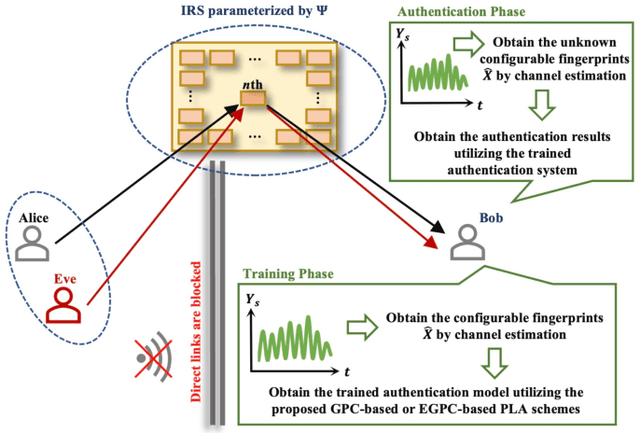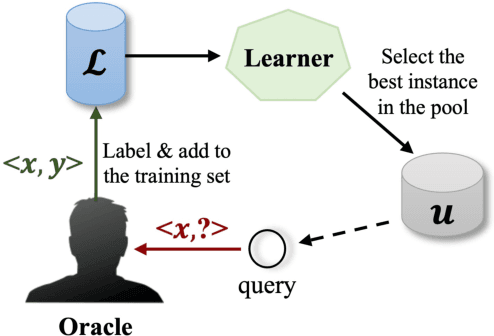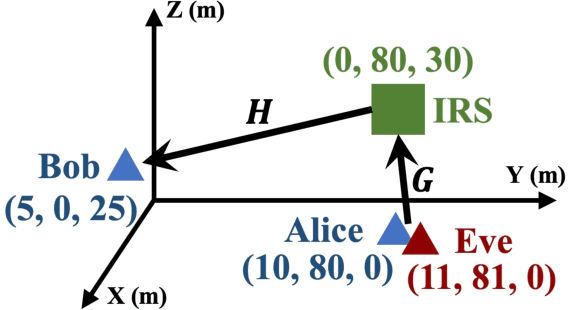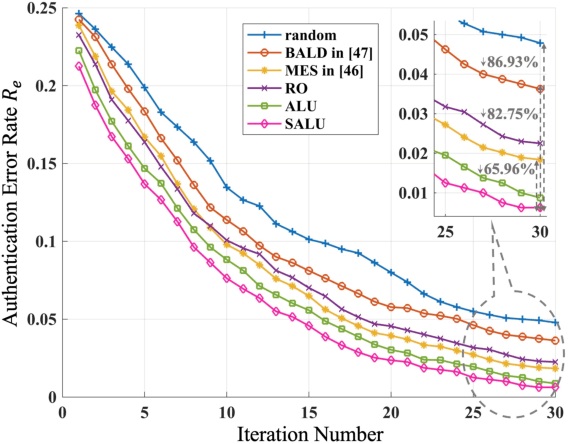Bizhu Wang
Instance Communication System for Intelligent Connected Vehicles: Bridging the Gap from Semantic to Instance-Level Transmission
Dec 27, 2025Abstract:Intelligent Connected Vehicles (ICVs) rely on high-speed data transmission for efficient and safety-critical services. However, the scarcity of wireless resources limits the capabilities of ICVs. Semantic Communication (SemCom) systems can alleviate this issue by extracting and transmitting task-relevant information, termed semantic information, instead of the entire raw data. Despite this, we reveal that residual redundancy persists within SemCom systems, where not all instances under the same semantic category are equally critical for downstream tasks. To tackle this issue, we introduce Instance Communication (InsCom), which elevates communication from the semantic level to the instance level for ICVs. Specifically, InsCom uses a scene graph generation model to identify all image instances and analyze their inter-relationships, thus distinguishing between semantically identical instances. Additionally, it applies user-configurable, task-critical criteria based on subject semantics and relation-object pairs to filter recognized instances. Consequently, by transmitting only task-critical instances, InsCom significantly reduces data redundancy, substantially enhancing transmission efficiency within limited wireless resources. Evaluations across various datasets and wireless channel conditions show that InsCom achieves a data volume reduction of over 7.82 times and a quality improvement ranging from 1.75 to 14.03 dB compared to the state-of-the-art SemCom systems.
Image Steganography For Securing Intellicise Wireless Networks: "Invisible Encryption" Against Eavesdroppers
May 07, 2025Abstract:As one of the most promising technologies for intellicise (intelligent and consice) wireless networks, Semantic Communication (SemCom) significantly improves communication efficiency by extracting, transmitting, and recovering semantic information, while reducing transmission delay. However, an integration of communication and artificial intelligence (AI) also exposes SemCom to security and privacy threats posed by intelligent eavesdroppers. To address this challenge, image steganography in SemCom embeds secret semantic features within cover semantic features, allowing intelligent eavesdroppers to decode only the cover image. This technique offers a form of "invisible encryption" for SemCom. Motivated by these advancements, this paper conducts a comprehensive exploration of integrating image steganography into SemCom. Firstly, we review existing encryption techniques in SemCom and assess the potential of image steganography in enhancing its security. Secondly, we delve into various image steganographic paradigms designed to secure SemCom, encompassing three categories of joint source-channel coding (JSCC) models tailored for image steganography SemCom, along with multiple training strategies. Thirdly, we present a case study to illustrate the effectiveness of coverless steganography SemCom. Finally, we propose future research directions for image steganography SemCom.
Efficient Semantic-aware Encryption for Secure Communications in Intelligent Connected Vehicles
Feb 23, 2025Abstract:Semantic communication (SemCom) significantly improves inter-vehicle interactions in intelligent connected vehicles (ICVs) within limited wireless spectrum. However, the open nature of wireless communications introduces eavesdropping risks. To mitigate this, we propose the Efficient Semantic-aware Encryption (ESAE) mechanism, integrating cryptography into SemCom to secure semantic transmission without complex key management. ESAE leverages semantic reciprocity between source and reconstructed information from past communications to independently generate session keys at both ends, reducing key transmission costs and associated security risks. Additionally, ESAE introduces a semantic-aware key pre-processing method (SA-KP) using the YOLO-v10 model to extract consistent semantics from bit-level diverse yet semantically identical content, ensuring key consistency. Experimental results validate ESAE's effectiveness and feasibility under various wireless conditions, with key performance factors discussed.
Secure Semantic Communication With Homomorphic Encryption
Jan 17, 2025



Abstract:In recent years, Semantic Communication (SemCom), which aims to achieve efficient and reliable transmission of meaning between agents, has garnered significant attention from both academia and industry. To ensure the security of communication systems, encryption techniques are employed to safeguard confidentiality and integrity. However, traditional cryptography-based encryption algorithms encounter obstacles when applied to SemCom. Motivated by this, this paper explores the feasibility of applying homomorphic encryption to SemCom. Initially, we review the encryption algorithms utilized in mobile communication systems and analyze the challenges associated with their application to SemCom. Subsequently, we employ scale-invariant feature transform to demonstrate that semantic features can be preserved in homomorphic encrypted ciphertext. Based on this finding, we propose a task-oriented SemCom scheme secured through homomorphic encryption. We design the privacy preserved deep joint source-channel coding (JSCC) encoder and decoder, and the frequency of key updates can be adjusted according to service requirements without compromising transmission performance. Simulation results validate that, when compared to plaintext images, the proposed scheme can achieve almost the same classification accuracy performance when dealing with homomorphic ciphertext images. Furthermore, we provide potential future research directions for homomorphic encrypted SemCom.
A Survey of Secure Semantic Communications
Jan 01, 2025



Abstract:Semantic communication (SemCom) is regarded as a promising and revolutionary technology in 6G, aiming to transcend the constraints of ``Shannon's trap" by filtering out redundant information and extracting the core of effective data. Compared to traditional communication paradigms, SemCom offers several notable advantages, such as reducing the burden on data transmission, enhancing network management efficiency, and optimizing resource allocation. Numerous researchers have extensively explored SemCom from various perspectives, including network architecture, theoretical analysis, potential technologies, and future applications. However, as SemCom continues to evolve, a multitude of security and privacy concerns have arisen, posing threats to the confidentiality, integrity, and availability of SemCom systems. This paper presents a comprehensive survey of the technologies that can be utilized to secure SemCom. Firstly, we elaborate on the entire life cycle of SemCom, which includes the model training, model transfer, and semantic information transmission phases. Then, we identify the security and privacy issues that emerge during these three stages. Furthermore, we summarize the techniques available to mitigate these security and privacy threats, including data cleaning, robust learning, defensive strategies against backdoor attacks, adversarial training, differential privacy, cryptography, blockchain technology, model compression, and physical-layer security. Lastly, this paper outlines future research directions to guide researchers in related fields.
Cross-Layer Encrypted Semantic Communication Framework for Panoramic Video Transmission
Nov 19, 2024Abstract:In this paper, we propose a cross-layer encrypted semantic communication (CLESC) framework for panoramic video transmission, incorporating feature extraction, encoding, encryption, cyclic redundancy check (CRC), and retransmission processes to achieve compatibility between semantic communication and traditional communication systems. Additionally, we propose an adaptive cross-layer transmission mechanism that dynamically adjusts CRC, channel coding, and retransmission schemes based on the importance of semantic information. This ensures that important information is prioritized under poor transmission conditions. To verify the aforementioned framework, we also design an end-to-end adaptive panoramic video semantic transmission (APVST) network that leverages a deep joint source-channel coding (Deep JSCC) structure and attention mechanism, integrated with a latitude adaptive module that facilitates adaptive semantic feature extraction and variable-length encoding of panoramic videos. The proposed CLESC is also applicable to the transmission of other modal data. Simulation results demonstrate that the proposed CLESC effectively achieves compatibility and adaptation between semantic communication and traditional communication systems, improving both transmission efficiency and channel adaptability. Compared to traditional cross-layer transmission schemes, the CLESC framework can reduce bandwidth consumption by 85% while showing significant advantages under low signal-to-noise ratio (SNR) conditions.
Efficient Gaussian Process Classification-based Physical-Layer Authentication with Configurable Fingerprints for 6G-Enabled IoT
Jul 23, 2023



Abstract:Physical-Layer Authentication (PLA) has been recently believed as an endogenous-secure and energy-efficient technique to recognize IoT terminals. However, the major challenge of applying the state-of-the-art PLA schemes directly to 6G-enabled IoT is the inaccurate channel fingerprint estimation in low Signal-Noise Ratio (SNR) environments, which will greatly influence the reliability and robustness of PLA. To tackle this issue, we propose a configurable-fingerprint-based PLA architecture through Intelligent Reflecting Surface (IRS) that helps create an alternative wireless transmission path to provide more accurate fingerprints. According to Baye's theorem, we propose a Gaussian Process Classification (GPC)-based PLA scheme, which utilizes the Expectation Propagation (EP) method to obtain the identities of unknown fingerprints. Considering that obtaining sufficient labeled fingerprint samples to train the GPC-based authentication model is challenging for future 6G systems, we further extend the GPC-based PLA to the Efficient-GPC (EGPC)-based PLA through active learning, which requires fewer labeled fingerprints and is more feasible. We also propose three fingerprint selecting algorithms to choose fingerprints, whose identities are queried to the upper-layers authentication mechanisms. For this reason, the proposed EGPC-based scheme is also a lightweight cross-layer authentication method to offer a superior security level. The simulations conducted on synthetic datasets demonstrate that the IRS-assisted scheme reduces the authentication error rate by 98.69% compared to the non-IRS-based scheme. Additionally, the proposed fingerprint selection algorithms reduce the authentication error rate by 65.96% to 86.93% and 45.45% to 70.00% under perfect and imperfect channel estimation conditions, respectively, when compared with baseline algorithms.
Innovative semantic communication system
Feb 19, 2022Abstract:Traditional communication systems focus on the transmission process, and the context-dependent meaning has been ignored. The fact that 5G system has approached Shannon limit and the increasing amount of data will cause communication bottleneck, such as the increased delay problems. Inspired by the ability of artificial intelligence to understand semantics, we propose a new communication paradigm, which integrates artificial intelligence and communication, the semantic communication system. Semantic communication is at the second level of communication based on Shannon and Weaver\cite{6197583}, which retains the semantic features of the transmitted information and recovers the signal at the receiver, thus compressing the communication traffic without losing important information. Different from other semantic communication systems, the proposed system not only transmits semantic information but also transmits semantic decoder. In addition, a general semantic metrics is proposed to measure the quality of semantic communication system. In particular, the semantic communication system for image, namely AESC-I, is designed to verify the feasibility of the new paradigm. Simulations are conducted on our system with the additive white Gaussian noise (AWGN) and the multipath fading channel using MNIST and Cifar10 datasets. The experimental results show that DeepSC-I can effectively extract semantic information and reconstruct images at a relatively low SNR.
 Add to Chrome
Add to Chrome Add to Firefox
Add to Firefox Add to Edge
Add to Edge